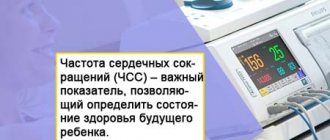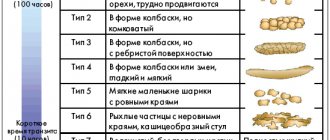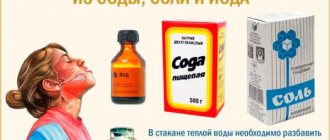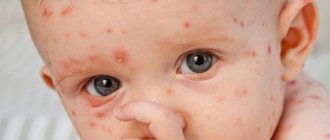Medical editor: Trofimova D., pediatrician. July, 2019.
ICD-10 code: L20-L30.
In infants, diathesis usually manifests itself as symptoms on the skin - on the cheeks and scalp. In children 3-6 years old, lymph nodes may become enlarged. From 7 to 12 years, joint pain and gastrointestinal disorders are possible. The disease occurs due to the structural features of the immune system and gastrointestinal tract. The development of diathesis is due to the presence of a hereditary predisposition in combination with errors in diet. Treatment includes antihistamines, local therapy and a hypoallergenic diet.
Diathesis is not a specific disease, it is a whole complex of symptoms and changes associated with constitutional anomalies - a genetically determined feature of the body. These characteristics are expressed in a tendency to certain diseases. At its core, diathesis is a “pre-disease”, which is characterized by a predisposition to negative reactions to irritants (food components, household chemicals, etc.) and the ability to transform into a disease under the influence of such negative reactions.
There are 3 forms of diathesis:
- Up to 3 years: exudative-catarrhal: manifests itself on the skin and mucous membranes;
- 3-6 years: lymphatic-hypoplastic: lymph nodes enlarge;
- 7-12 years: neuro-arthritic: gastrointestinal disorders, enuresis, joint pain.
Causes of diathesis
It is difficult to limit oneself to one reason why a child develops diathesis. As a rule, this is a whole complex of factors. Together, they provoke this violation.
These include:
- Hereditary predisposition.
- Serious errors in the diet of a pregnant woman: eating harmful foods that are full of chemical components.
- Excessive consumption of allergenic foods during pregnancy. Such products are: honey, berries, chocolate, citrus fruits, nuts, milk, eggs.
- Chronic diseases of women, as well as infectious diseases suffered during pregnancy.
- Treatment with antibacterial drugs during pregnancy.
- Severe toxicosis during pregnancy.
- Feeding the child with artificial formula, or giving up breastfeeding too early.
- Child's allergy to artificial formula or cow's milk. Its introduction into the infant’s diet is too early.
Diathesis can be triggered by an allergy to food, contact with the skin of allergenic substances, or their inhalation.
Respiratory diathesis
Respiratory diathesis may be due to the following factors:
- Lack of wet cleaning in the room where the infant lives.
- Availability of dust collectors in the apartment.
- Purchase of new low-quality furniture, renovation of the apartment.
- Presence of pets, poultry, etc. in the living space.
- Excessive use by adult family members of such products as: toilet water, deodorants, air flavors, household chemicals with chlorine, washing powders, etc.
- Chinese toys that give off a strong chemical smell. They often cause poisoning of the child's body.
Food allergies
Almost any food product or substances included in its composition can provoke diathesis. Moreover, not only a child’s body, but also an adult’s, can react sharply. For a baby, what his mother eats is of great importance. To minimize the likelihood of developing diathesis, complementary foods should be introduced at the appropriate time.
Contact diathesis
Contact diathesis can develop under the influence of the following factors:
- Improper hygiene procedures. For the first 3 months, you need to wash the baby in boiled water, cooling it to a comfortable temperature. You should not use products containing a lot of chemical components to bathe your baby.
- Washing items with powders that contain surfactants and phosphates in significant quantities. By the way, this is the “sin” of many children’s laundry detergents, including the popular Eared Nanny.
- Use of clothing and diapers made of synthetic materials. Infants should be dressed in clothes made from natural fabrics. Under woolen items, you must wear a cotton undershirt.
- Using wet wipes to care for baby's skin. This is especially true for wipes with an antibacterial effect.
Autoimmune diathesis
Diathesis can develop when a child’s body is prone to autoimmune diseases. In this case, the baby will have increased sensitivity to ultraviolet rays, a high level of immunoglobulins of class E and M, etc., will be detected in the blood.
Infectious-allergic diathesis
Diathesis can develop after viral or bacterial infections. The main manifestation of the disorder will be skin rashes.
Exudative-catarrhal diathesis
Exudative-catarrhal diathesis develops when the child’s body is predisposed to pseudo-allergic reactions, to the formation of infiltrates and excessive exfoliation of the skin, and to disruptions in metabolic processes.
This diathesis most often affects heavy infants whose subcutaneous tissue is too loose. Babies often develop diaper rash, weak skin tone, seborrheic crusts form on the head, and digestion is significantly impaired. Palpation of the lymphatics often reveals their increase in size, and the skin is exposed to bacterial damage.
Mysterious term
Active familiarization of the general public with the achievements of modern medical science has led to the fact that many highly specialized medical terms began to be constantly used in our everyday speech.
Words like “heart attack”, “stroke”, “shock”, “resection” are on everyone’s lips, but this fact does not at all indicate an understanding of the meaning of these words. A worthy place among the above-mentioned terms is occupied by the concept of diathesis. This word is known to everyone who has a child, to everyone who has visited a children's clinic and to everyone who has crossed the threshold of a house where a small child is. Pregnant women are scared of future diathesis; existing diathesis in children is treated, but 100% of mothers have no idea what diathesis is. Let's imagine the following situation: an ordinary compatriot of ours wanted to get acquainted with the achievements of advanced medical science and leaf through the latest textbook on pediatrics. He ran to the bookstore and in the corresponding section he found two very thick and very beautiful books: “Pediatrics” - a textbook of the US national medical series and, again, “Pediatrics” - a manual written by the team of the Boston Children’s Clinic (all the same USA) . But, looking at the subject index, our curious comrade will be surprised to discover that in none of the indicated books THERE IS ANY SUCH WORD “DIATESIS” AT ALL!
How so!? What kind of illness is this, known to everyone among us, but unknown to our especially advanced overseas friends? Having established this strange state of affairs and intrigued the surprised readers, we will now try to understand this very diathesis.
Symptoms of diathesis
Symptoms of diathesis can be very diverse, but it is impossible not to notice them. The child suffers not only the skin, but also other body systems. Every woman should know exactly how the disorder manifests itself, since all children are at risk. The sooner treatment is started, the less harm diathesis will cause to the child’s body. At the same time, it must be distinguished from prickly heat, skin rash, diaper and atopic dermatitis, etc.
Skin reaction:
- Seborrhea (gneiss).
Scales form on the scalp, crown and eyebrows of the child. They are brown in color and feel greasy to the touch. They can be easily removed if treated with oil. Under the crusts, red inflamed skin or areas of weeping are visible. After a short period of time, these crusts will appear again. The child will be restless, as seborrhea causes skin itching in areas of accumulation.
- Milk scab.
This symptom manifests itself in the form of redness in the child’s cheeks. The affected area is bright red in color, often the blush has a clear outline. The skin in the affected area is thicker than elsewhere. Small scales are visible on it, and it is rough to the touch. If the disease is severe, then crusts and blisters form on the cheeks.
- Diaper rash.
Different areas suffer from diaper rash: the skin behind the ears, the folds of the limbs, the groin area, and the armpits. It is difficult to cope with diaper rash due to diathesis, since it is difficult to treat. Even good hygiene doesn't help.
- Strophulus.
This disorder manifests itself in a rash that looks like small nodules. It covers the legs, arms, torso. The rash is very itchy.
- Eczema. It can bother a child from the first month of life to 2 years. Eczema develops because the baby scratches the skin, and these microtraumas become infected. Eczema is predominantly wet, with areas of suppuration visible. The child suffers from intoxication of the body. Less common is dry eczema, which is accompanied by peeling of the dermis. Over time, it will turn into neurodermatitis. If the disease is severe, then eczema affects not only the cheeks, but also the hips, chest, and shoulders of the child.
- Hives. This symptom is characterized by the appearance of blisters on the skin, which in appearance resemble nettle burns. These blisters are very itchy.
In addition to the skin, the mucous membranes of the child will suffer during diathesis, which is manifested by symptoms such as:
- Geographical language.
Spots appear on it, which give the organ a certain resemblance to a geographical map. This disorder develops due to uneven desquamation of the tongue mucosa.
- Damage to the mucous membranes of the digestive system.
This is manifested by a variety of disorders, including: diarrhea, dysbacteriosis, vomiting, nausea, abdominal pain.
- Inflammation of the mucous membranes of the respiratory system.
This is manifested by a cough that cannot be eliminated with standard medications, as well as an allergic runny nose.
- Inflammation of the organs of vision, which is expressed as allergic conjunctivitis.
- Inflammation of the bladder with symptoms of cystitis.
Separately, the general symptoms of diathesis should be highlighted:
- The baby becomes restless and cries all the time.
- The baby's sleep is disturbed.
- The child spits up frequently.
- He loses his appetite.
Symptoms of exudative-catarrhal type
This variety is classified as an allergic or atopic type; this diathesis dominates among children under the age of one year. According to medical statistics, up to 70% of newborns face this problem. With the right approach, you can get rid of the disease in a couple of years. At least extinguish its manifestations for many years. An additional factor pushing the disease may be allergic diseases in the family, to which the tendency is inherited.
Figure No. 1. Exudative diathesis
Visual signs of this type of diathesis include:
- Severe seborrheic dermatitis. Be careful, because if the form is advanced, it can turn into eczema;
- The appearance of milk scab on the cheeks is a noticeable redness of the skin on the cheeks, the presence of swelling, itching and peeling of the dermis;
- Diaper rash on the skin;
- Paratrophy – alternating sharp gain and loss of body weight;
- The face is painfully pale or swollen;
- Damage to the mucous membrane of the tongue;
- Bloating or excessive gas.
This type of diathesis affects children with weak immune systems, who often suffer from respiratory infections and suffer from damage to the oropharyngeal mucosa.
Other types of diathesis
Lymphatic diathesis
Lymphatic diathesis develops in children with insufficiency of the lymphatic system against the background of poor functioning of the thymus gland. The child suffers from frequent allergies, the skin is always inflamed. The functioning of the adrenal glands is reduced, the immune system is weak, which is especially noticeable in terms of skin manifestations.
In children with lymphatic diathesis, the legs and arms are excessively long, while the torso is short. Lymph nodes and tonsils are always enlarged. The same applies to the thymus gland. Sometimes it even interferes with the child’s normal breathing. Many children with this condition develop anemia.
Neuro-arthritic diathesis
This type of diathesis leads to increased nervous excitability and mental exhaustion. Children develop quickly mentally, but are extremely restless. This is especially noticeable in contrast to healthy peers. Acetone crises are one of the obvious symptoms of neuro-arthritic diathesis. They cause parents to panic and provoke thoughts of serious pathologies. The crisis is characterized by repeated vomiting, the child turns pale, becomes lethargic, and may lose consciousness.
The reason that provokes the crisis is hunger or other dietary errors, for example, excessive consumption of protein and fatty foods. Stress can also cause a crisis. The body releases anti-insulin hormones, which leads to an increase in the level of ketone bodies in the blood. All this negatively affects the central nervous system. In such cases, the likelihood of developing a coma increases. The blood vessels spasm, which leads to irritation of the mucous membrane of the digestive system and the child vomits.
Children with this type of diathesis suffer from obesity and develop diseases that affect the kidneys. In adulthood, there is a high risk of gout, which is caused by disruptions in uric acid metabolism.
Types in newborns:
- Neuro-arthritic appearance
does not manifest itself until age 6. The diseases are difficult to diagnose;
- Exudative-catarrhal appearance
appears on the body in the form of a rash and red spots on the cheeks. This is usually a food allergen;
- Lymphatic-hypoplastic appearance
appears due to disruption of the adrenal glands and enlargement of the lymph nodes. Such children are prone to infectious diseases and allergies.
Treatment of diathesis
Treatment of diathesis is a rather complex process. It will not be possible to achieve results if parents do not follow all medical recommendations. When an infant develops diathesis, a woman needs to go on a strict diet, eating porridge with water and crackers. Then you need to evaluate the child’s reaction to changes in the mother’s menu.
Twice a day, the baby will need to bathe in a decoction of string and sage, perform starch baths, and make lotions with furatsilin and soda.
Nutritional habits of a woman who is breastfeeding
Often, diathesis in a baby develops when a woman eats sausage, sweets, and smoked foods. Sometimes even chicken, fruits and dairy products that a nursing mother eats lead to problems in the baby. The fact is that in the process of their production and cultivation, antibiotics are often used, to which the child’s body reacts with diathesis. Meat processing, chemical fertilizers and harmful substances that are used for long-term storage have an effect.
Measures to reduce the likelihood of developing an allergic reaction
To minimize harm from food, the following conditions should be observed:
- Cook, bake or steam food.
- Before cooking, soak cereals and vegetables in cool water for at least 10 hours.
- Drain the first broth while cooking the meat (pre-boiling time is 20 minutes). Only after this should the products be brought to full readiness.
- Before purchasing products, you should study their composition, which is indicated on the packaging. The fewer unknown components it contains, the better.
Rules for feeding and caring for an infant
- You need to put your baby to your breast as early as possible.
- Breastfeeding should continue until the baby is 6 months old. This is the recommendation of the World Health Organization.
- If the child is bottle-fed, then it is necessary to carefully select infant formula.
- Complementary foods must be administered correctly. Zucchini, cauliflower, potatoes, and turnips are suitable as the first vegetables. Before offering them to your child, you need to soak the vegetables in cool water (soaking time is 12 hours). Only after this can they be given to the child.
- Complementary foods should be introduced gradually. On one day, the child is offered only one product.
- It is important to monitor your baby’s reaction to a new dish. If it gives a negative reaction, then he refuses it for a while. It's good if mom keeps a food diary.
- All allergenic foods are not suitable for introducing the first complementary foods.
Compliance with baby care rules
- Your child's underwear should always be clean.
- For washing you must use neutral detergents.
- After the child urinates or passes stool, you need to wash his skin.
- Mother and child should not be allowed to take a bath together.
- To care for your baby's skin you need to use specialized products.
- The child's nails should be cut short.
- Allergens in the apartment must be kept to a minimum. It is important to remove animal hair, regularly carry out wet cleaning, and get rid of soft toys.
Prevention
Often, a tendency to diathesis arises as a result of the abuse of certain foods during pregnancy. The baby, while still inside the mother, develops a predisposition to an acute reaction to certain foods or drinks. Therefore, it is necessary to think about the prevention of diathesis even before the child is born.
Follow these preventive measures:
- Use foods from the group of strong allergens with caution or completely avoid them during pregnancy and breastfeeding.
- To wash children's clothes, use only baby powder.
- Take care of your toddler's skin. If any changes occur, promptly treat your baby's skin with hygiene products.
- Temper your child.
- Do not delay contacting a doctor if primary symptoms of illness appear.
- If complementary foods are introduced to your child, make sure that age standards are observed and that the correct sequence of products is introduced.
- In the first six months, the baby must bathe exclusively in boiled water.
- Air and sunbathing techniques are important.
You should not be calm about the appearance of diathesis in a toddler. Mom must promptly identify the cause and respond to it in a timely manner. Don’t think that diathesis will go away on its own. We must not forget that a neglected condition can cause serious complications. It’s even better to prevent the occurrence of diathesis by following simple preventive measures.
Treatment with drugs
A child with diathesis is prescribed antihistamines:
- 1st generation allergy medications have a sedative effect on the body. Therefore, they are used when the baby is excessively restless, suffers from sleep disturbances, and cries a lot. The drugs are prescribed for a period of up to 14 days. They are changed every 5 days. Such medicines include: Suprastin, Pipolfen, Tavegil.
- 2nd generation allergy treatments. They quickly relieve allergy symptoms, but do not have a hypnotic effect. Therefore, you can take them for several weeks. Such drugs include: Zyrtec, Elastin, Claritin.
Sedatives are prescribed if the child is too restless or crying.
Probiotics are indicated for use when a child is diagnosed with dysbiosis. They are prescribed courses. For this purpose, Bifidumbacterin, Linex, Normobact, etc. can be used.
Many doctors question the use of immunomodulators. In infants, the immune system in any case does not differ in maturity. While additional drug load can lead to a weakening of defenses and can become a trigger for autoimmune processes.
Food route.
- Take your time with complementary foods.
- Reduce the number of experiments to a minimum.
- Do not reduce the amount, but completely eliminate foods that are a highly likely source of allergies (any citrus fruits, as well as any other exotic fruits and vegetables, strawberries, chocolate).
- Be simpler! Think less about your neighbors and friends who will judge you for allegedly saving money on your child. Remember that any very beautiful and very large apple requires, in turn, a very large amount of fertilizers and pest repellents.
- When purchasing any product, think about basic questions - who made it (grew it) and when, where it was stored, what the expiration date is, etc.
- When allergy symptoms intensify, remember what happened (what you ate) the day before - during the day. Write down, think, analyze. Remember: You are your own detectives. Did you give me an apple? It is not yet a fact that dermatitis is caused by it. Where did you buy the apple? What kind of apple is it - red, green, speckled, sweet, sour, juicy, soft, hard?
Local treatment of diathesis
If a child suffers from acute diathesis, then he needs to be bathed once a day. Features of the procedure:
- The bath time is 10 minutes.
- If a child has weeping eczema, then you need to add potassium permanganate to the water so that it becomes a faint pink color.
- If a child has diaper rash, then add an infusion of string or sage to the water. You can use starch. To prepare the infusion, take a tablespoon of herb per glass of water (holding time is 20 minutes). Before adding the infusion to the bath, you need to strain the composition.
- Starch (2 tablespoons) is dissolved in 50 grams of cold water, then 2 cups of boiling water are added to it and poured into the bath.
After the procedure, the child’s skin folds are lubricated with vegetable oil. It is pre-boiled and cooled.
You can also use the following tools:
- Lotions with Furacilin solution. You will need half a tablet per glass of water. The lotions are left on the child’s skin until the redness goes away. It is important to ensure that the cotton swab does not dry out.
- Lotions with soda that help get rid of itchy skin. Take a teaspoon of soda per glass of water. It is forbidden to rub the baby's skin. Cotton wool soaked in the solution is simply applied to the baby’s skin.
- Baby oil and baby cream can be used in areas of excessive flaking of the skin.
- Ointments for diathesis. Such remedies can only eliminate the visible manifestations of the disorder, but they are not able to cope with the cause of the problem.
Many creams and ointments for diathesis have contraindications and side effects. They should not be used without medical advice.
Non-hormonal ointments:
- Guzhienko paste with zinc and diphenhydramine. It is made to order in a pharmacy.
- Elidel. The ointment can be used starting from three months of age. The drug is gently rubbed into the skin 3 times a day.
- Fenistil gel. It can be used from one month of age. Apply the product to the skin 3 times a day in a thin layer.
- Bepanthen ointment. It is applied to the dermis 2 times a day.
- La-cree. The drug contains panthenol, walnut extract, string, licorice and bisabolol.
- Tsindol. A preparation based on zinc oxide.
- Desitin with zinc oxide.
If bacterial inflammation develops on the skin, then you can use Vishnevsky ointment, Levomekol, Xeroform in the form of a powder.
Medical examination and confirmation of diagnosis
Diathesis is not an independent disease. Therefore, children with manifestations of constitutional anomalies can be patients of different specialists - a pediatrician, nephrologist, endocrinologist, dermatologist. Laboratory research methods are used to confirm the final diagnosis. All young patients undergo blood and urine tests to determine the level of glucose, cholesterol, and uric acid. It is mandatory to examine stool for dysbacteriosis. In case of lymphatic-hypoplastic diathesis, an ultrasound scan of the lymph nodes, liver and spleen is additionally performed.
Forecast
If all measures to prevent diathesis are followed in full, then the disorder can be overcome by 2-4 years. The child ceases to suffer from allergies to those substances that previously caused an inflammatory reaction in him. He will begin to tolerate cow's milk protein, eggs and fruit.
If diathesis cannot be brought under control and the disease worsens all the time, then in the future this threatens the development of allergies and immunodeficiency.
If there are cases of diathesis in the family, then prevention of the disorder should begin during pregnancy. A woman should exclude allergic foods from her diet. Smoking is prohibited during pregnancy. This bad habit not only increases the likelihood of developing diathesis, but also other serious diseases.
Author of the article:
Sokolova Praskovya Fedorovna |
Pediatrician Education: Diploma in general medicine received from Volgograd State Medical University. Immediately received a specialist certificate in 2014. Our authors
Traditional medicine recipes
Often, a child’s body reacts to allergenic substances in nutritious foods, but they can reach the baby by air or contact.
Folk remedies are often used to treat the disease. One of the simplest and most popular remedies is eggshells . To do this, you need to leave it in a dry and warm room for two to three days, and then grind it to a powder state. For this purpose, you can use a mortar or coffee grinder. The product should be given to the baby for two days.
If the child is less than a year old, then there should be a little powder (at the tip of a small spoon). At two to three years of age, the dose can be doubled. Additionally, the shells can be mixed with lemon juice or food . The course of treatment varies from two to three months.
You can also give your baby fresh black radish juice . To begin with, a few drops of the drug are enough. Over time, the dosage is increased to one tablespoon. Before using any traditional medicine recipe, you should always consult your doctor.
Important preventive measures
You can avoid the appearance of diathesis if you follow a number of rules. The risk of disease increases significantly if the baby is given the same nutritious foods over a long period of time. As a preventative measure, experts advise adhering to the following recommendations:
- the room where the child lives needs to be ventilated from time to time;
- complementary foods must be introduced gradually and correctly;
- strengthening the immune system is carried out comprehensively;
- in the first months, the children's diet should contain exclusively hypoallergenic products;
- avoiding prolonged fasting or excessive feeding of the baby;
- When washing children's clothes, you should use only hypoallergenic products.
If diathesis is untimely or incorrectly treated, the likelihood of complications increases significantly. Proper treatment can save your baby from the tendency to have an allergic reaction. Otherwise, in adulthood, not only symptoms of diathesis may appear, but also concomitant diseases will appear .











